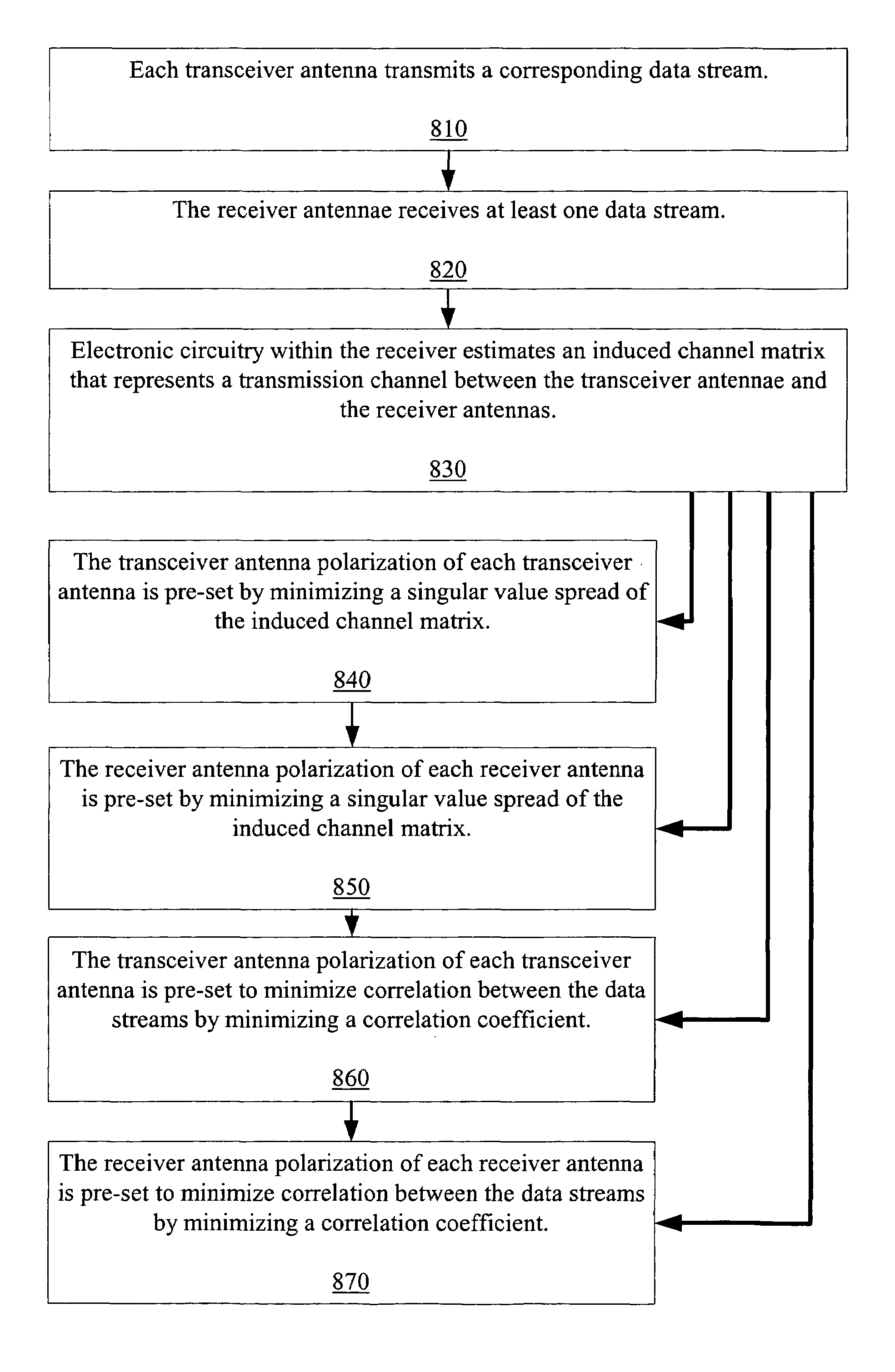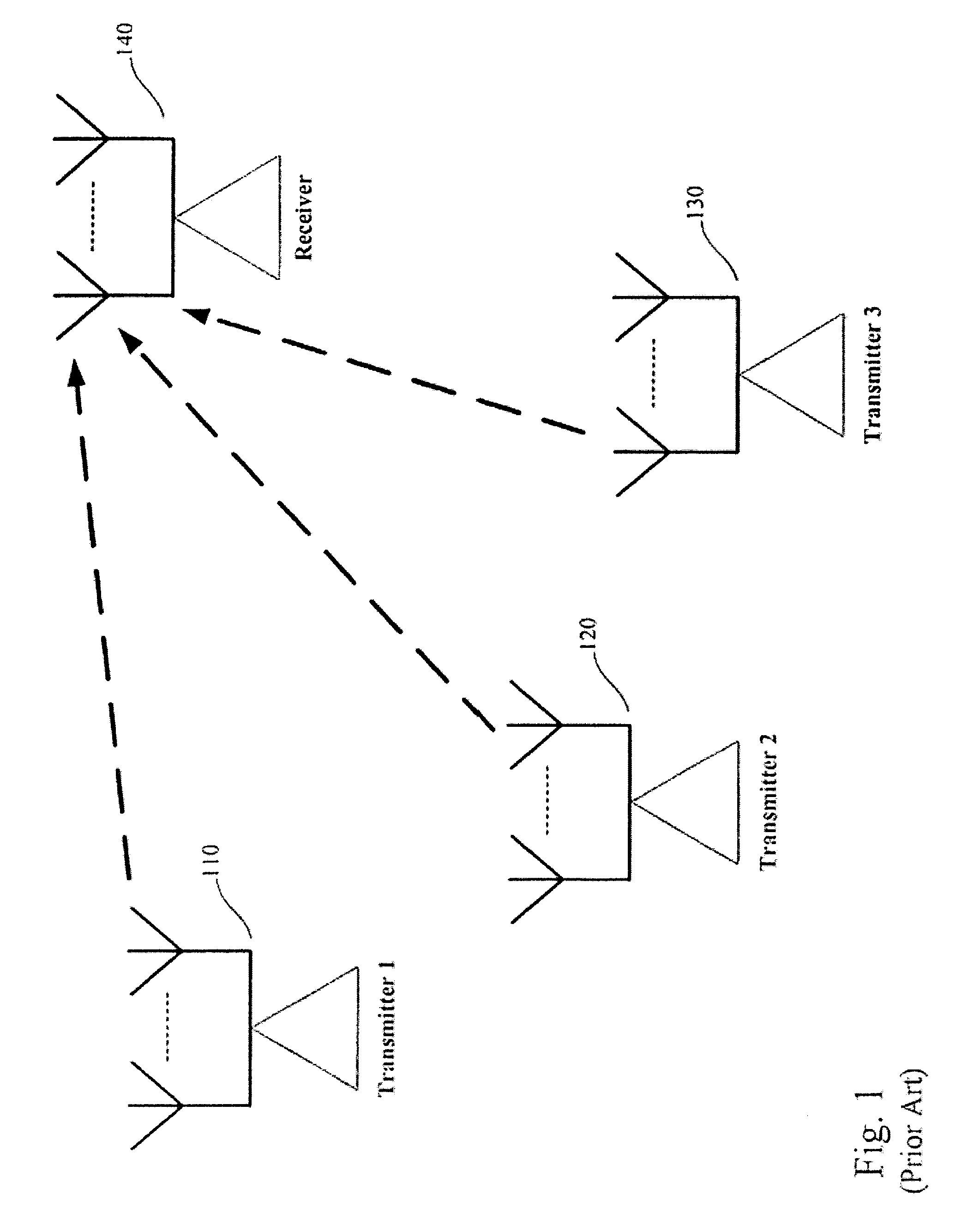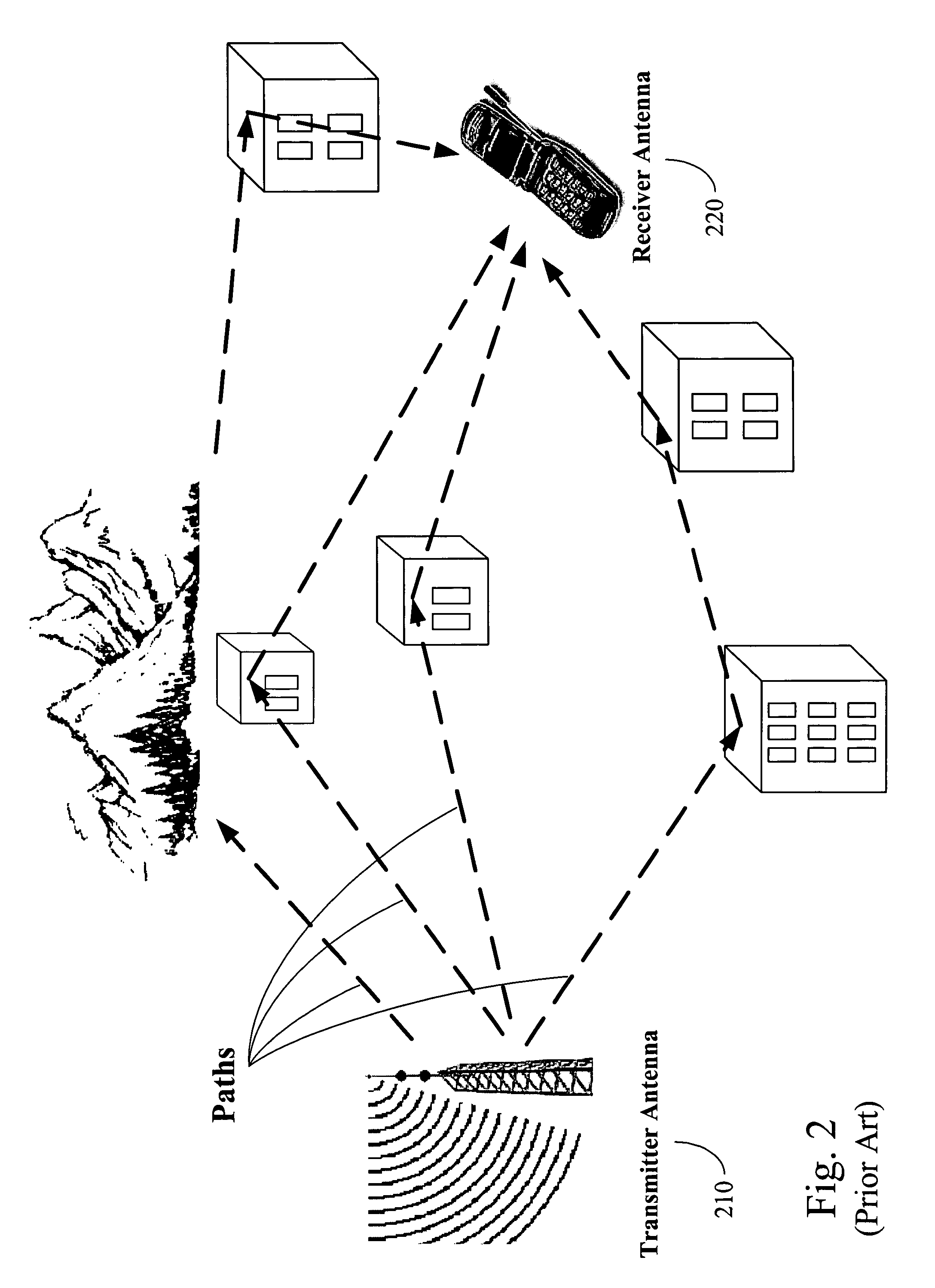Spatial separation and multi-polarization of antennae in a wireless network
- Summary
- Abstract
- Description
- Claims
- Application Information
AI Technical Summary
Benefits of technology
Problems solved by technology
Method used
Image
Examples
Embodiment Construction
[0037]As shown in the drawings for purposes of illustration, the invention is embodied in an apparatus and a method for wirelessly transmitting data streams from multiple antennae. Spatial separation and polarization allows the transmitted data streams to be more effectively separated and de-correlated within a receiver, thereby improving spatial multiplexing and communication diversity. The apparatus and method allows for adaptive optimization of received signal separation and received signal de-correlation.
[0038]FIG. 3 shows an embodiment of the invention. This embodiment includes a wireless communication system. The wireless communication system includes a transmitter 300. The transmitter 300 includes several transmitter antennae 305, 310, 315. The transmitter antennae 305, 310, 315 are spatially separated from each other. Additionally, each transmitter antenna 305, 310, 315 includes a transceiver antenna polarization orientation. At least one of the transmitter antennae has a tr...
PUM
 Login to View More
Login to View More Abstract
Description
Claims
Application Information
 Login to View More
Login to View More - R&D
- Intellectual Property
- Life Sciences
- Materials
- Tech Scout
- Unparalleled Data Quality
- Higher Quality Content
- 60% Fewer Hallucinations
Browse by: Latest US Patents, China's latest patents, Technical Efficacy Thesaurus, Application Domain, Technology Topic, Popular Technical Reports.
© 2025 PatSnap. All rights reserved.Legal|Privacy policy|Modern Slavery Act Transparency Statement|Sitemap|About US| Contact US: help@patsnap.com



